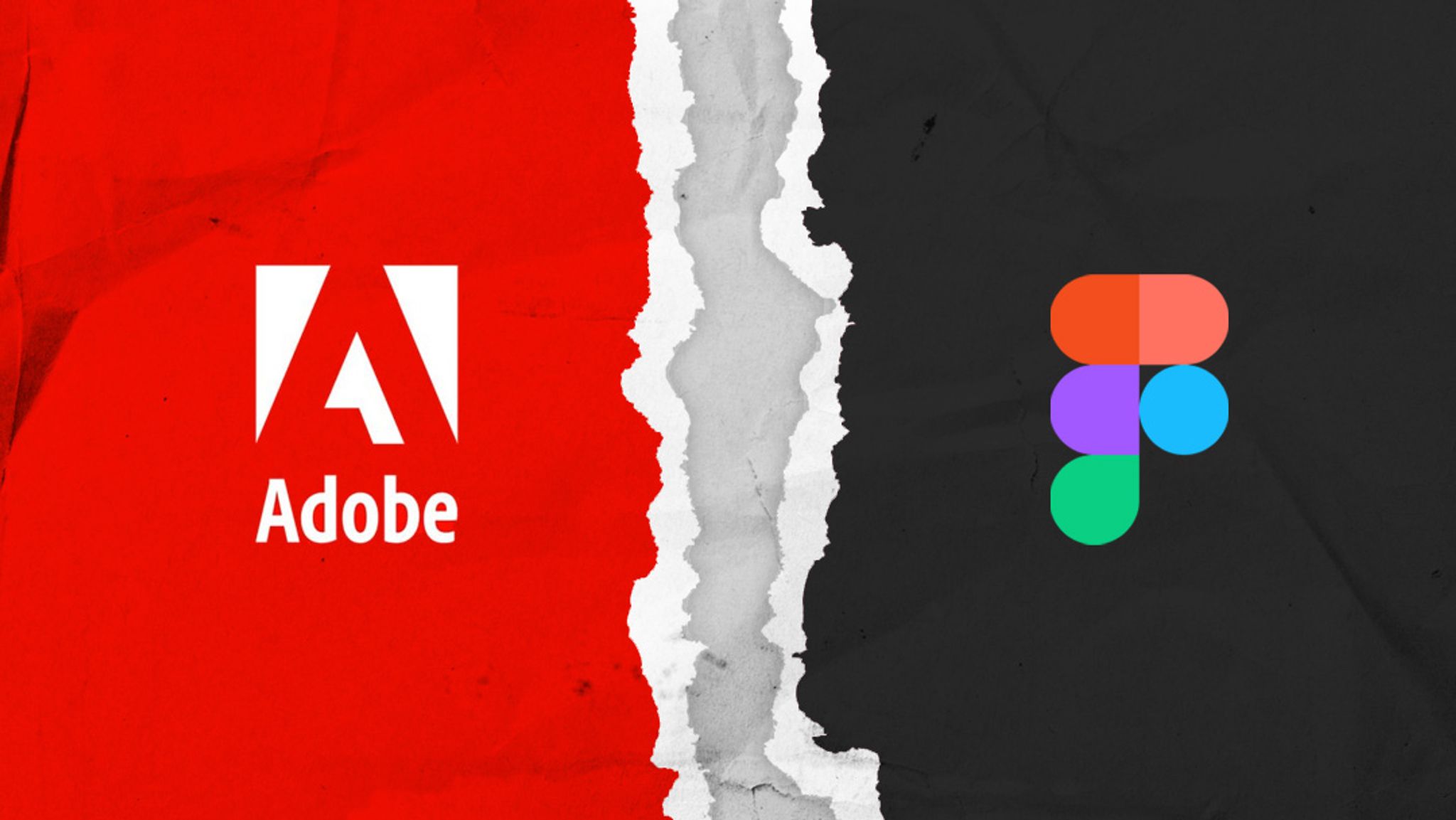Cut, Paste, Delete: Why Adobe’s Canceled Merger with Figma is Good for Innovation

Breaking up is hard to do. Unless you're getting $1 billion. Here's why this mutual parting of ways might be best for everyone.
Nope. It’s not a figma of your imagination.
On the same day that U.S. Steel agreed to a hefty takeover by Japan’s Nippon Steel, another deal in the software world was falling apart – one that delivered shock and awe when first announced in September of 2022.
Fast forward 15 months and a steely resolve has been exchanged for tears of regulatory regret.
Yesterday, Adobe – one of the leading technology platforms for creative, marketing, and digital experience software products – agreed to terminate its merger with Figma, a collaborative tool for designing, prototyping, and testing web and app interfaces (among other things).
When Adobe tendered its magnanimous offer of $20 billion for Figma, its press release stated that the iconic company – responsible for legendary products like Photoshop – was “reimaging the future of creativity and productivity.”
The truth, of course, is that Adobe was buying an up-and-coming competitor that had managed to do the impossible: attract millions of designers and developers away from its defacto product foothold, reflecting a troubling threat to its long-held grip on the creative industry.
But it wasn’t just about Figma’s technology (the big secret is that it never is).
As more alternatives to Adobe’s portfolio of products flooded the market – everything from design to video editing – a new generation of creators emerged. These remote digital nomads craved less “Paleolithic” desktop tools and drifted towards web-powered platforms with more flexible pricing models.
For this new breed of user, Adobe felt tethered to the past, focusing more on specialists. Figma felt like the future, one where almost anyone can become a designer. That unique intersection of product, brand, and culture captured the zeitgeist of the moment, helping Figma become a key disruptor during the height of a booming, pandemic-infused digital economy.
For Adobe, an acquisition made sense, allowing it to capture lost market share while tapping a whole new pipeline of prospects. For Figma? Well, there were 20 billion reasons to do it, despite marked resentment from its user base (just peruse some of the Subreddits on the subject).
But hey, what can you do? Anytime a beloved software platform is eaten by a larger competitor (e.g. Microsoft buying Github, and the list goes on) there are vocal pessimists across the user community.
As any Swifty would tell you, haters gonna hate.
And there were questions from users, as you might expect, about how Figma would fit in Adobe’s mammoth portfolio of over 100 technologies. How would it align with Adobe XD, the company’s existing UX design offering? From a brand standpoint, would it follow the same track as Magento – now Adobe Commerce – and slowly ride off into the sunset?
Regardless of any user friction, the companies forged ahead, sharing plans around their combined superpowers. This included ambitions to leverage Figma’s web-based, multi-player capabilities with Adobe’s cloud offerings to make the creative process more productive and accessible.
While talk of improving brainstorming and product design permeated the ethos, the strategic details were nebulous for obvious reasons: the deal was far from approved.
And that brings us to yesterday’s news. There’s a lot to unpack, but there are three key things I’ve taken away from the not-entirely-shocking revelation, and they have broader implications across the market – not just for Adobe and Figma.
More importantly, I think this is good for both vendors in several ways, chiefly from an innovation perspective. And that’s good for everyone – even if there's a little heartache involved.
1. M&A has changed (for better or worse)
Maybe it’s Gary Gensler beating the war drum in a post-FTX world, or just rampant remorse over past decisions. Either way, the M&A pipeline is being scrutinized more than ever by regulatory bodies, focused on preventing large players like Google from squashing competition with obscene amounts of cash. And $20 billion is, well, kinda obscene.
In this case, the deal was scuttled by supposed clashes with governing bodies in Europe and the UK. Last month, Britain's Competition and Markets Authority (CMA) said the deal would negatively impact innovation for software used by a large swath of the UK's digital designer marketplace. The EU voiced similar concerns, citing the potential for reduced competition.
“Despite thousands of hours spent with regulators around the world detailing differences between our businesses, our products, and the markets we serve, we no longer see a path toward regulatory approval of the deal,” said Dylan Field, Co-Founder and CEO of Figma, in a blog post yesterday.
Perhaps the compliance stamp on these software transactions isn’t as clear cut as, say, JetBlue and Spirit Airlines – which attempted to join forces earlier this year (that merger was priced at a paltry $3.8 billion, BTW).
But the same principles apply: it’s all about ensuring choice for consumers.
At the same time, startup exits have slowed considerably in 2023, and VCs have tightened their belts – and their expectations. The white-hot halcyon days of 2021 and 2022 are in the rearview, and that’s been a persistent drag on raising capital (by all accounts, the investment market looks poised to rebound next year).
As firm managers command greater confidence around the scope and scale of any investment, they’re looking closer than ever at the multipliers. Which, in the case of Figma’s price tag, was heavily overweighted in 2022, and more so today.
Also worth considering is the timetable for such a complex transaction. A lot has changed in the 15 months since the deal was announced, including the growth of Adobe’s stock price (the bigger story is the rise of generative AI, but more on that in a minute).
Complexity and lengthy transaction cycles will likely continue to impact M&A for the foreseeable future, but it's clear in this case how the dynamics can impact outcomes.
2. Figma is kicking butt – so why not go for the IPO?
Sure, with the loss of Figma, Adobe is giving up an attractive jewel in its creative crown. But when that jewel outshines you, it's an even more precarious challenge.
Let’s start with Figma’s revenue, which has grown from $400M to $600M since September of 2022. This is a far cry from a $20 billion valuation, but the company has demonstrated the level of profitability that might signal an IPO (when the time is right).
But let’s add one more gold nugget to the prospecting pan. As part of the proposed acquisition, Adobe agreed to pay Figma a whopping $1 billion breakup fee upon termination, to be paid almost immediately. Buoyed by this windfall, Figma will be well-positioned to focus on innovation over the coming years and fuel more competitive products and features – the likes of which will, without doubt, compete with Adobe.
According to Figma's CEO, that’s already happening. Over the last 15 months, the company shipped a myriad of new products and expanded into the UK and Asia. In essence, they never stopped the growth machine – and it’s paying off.
How’s the song go? Breaking up is hard to do. Maybe not in this case. If Figma plays its cards right, they can help users accelerate the design process and build digital products faster than ever. And in this hyper-paced product world, that’s the real deal.
3. AI is the gamechanger for both Adobe and Figma
I keep conjuring that 15-month period from “buy” to “bye,” which equates to years in this new normal. Conditions were quite different when Adobe agreed to acquire Figma, and nowhere was that more evident than with the rise of artificial intelligence.
Last September, generative AI wasn’t part of the common lexicon. ChatGPT had not yet enraptured the world. Since then, we’ve seen a massive investment in AI features across industries, specifically in areas like content and imagery – which is in Adobe and Figma's wheelhouse.
In less than a year, platforms like Canva have introduced generative content within their design tools and Kontent.ai in their headless CMS. Image generators like Dall-E and Midjourney are taking the visual potential of AI to entirely new levels (check the latter out, it will knock your socks off).
AI is where Adobe has focused its future, leading the pack with innovative new offerings. Photoshop of old now features generative capabilities that are incredibly robust (if not a tad challenging to prompt). The company says more is on the way – and with billions in reserve, they have ample cash to keep innovating.
Recently, Figma also joined the GenAI chorus, shipping its first native AI features. Bolstered by its revenue growth and impending breakup bucks, they’ll have plenty of runway for expanding AI features and capabilities.
Would Adobe float such a bloated number for Figma today? Not a chance – and AI is the chief determiner. That's why innovation in this area is essential for both players, and the mutual parting of ways is in their collective interest.
There may be some head-to-head competition betwixt the two, but no matter. AI has changed the game, and could soon disrupt things even further. Platforms like Uizard are bubbling up, allowing users to ideate and design UI/UX with nothing more than an idea and a few prompts.
Expect more of these players to enter the market in 2024 and create more choice – and maybe a little more chaos.
A designer walks into a bar…
… and asks the bartender, "Got any Helvetica?"
The bartender replies: “Sorry, we don’t serve your type here.”
Font humor aside, good design is no joke. When done well, it can be incredibly effective for communicating ideas. This goes back to the printed page and extends through modern application UX.
Most importantly, design is for humans – even if it's not directly created by humans. That trend towards automation has been a constant in the design world, but the people part has never changed.
I remember the first time I used Photoshop in college. It was astounding. Magical, even. It allowed users like me to explore new and imaginative pathways while accelerating the creative process. It only happened because Adobe committed to a culture of innovation – and with its latest crop of AI features, it appears to be continuing on that course.
Are they sweating this breakup? Sure. A billion is a big number, and a lot to walk away from. A few shareholders might be miffed (although they're up 4 points today, which suggests otherwise). But in the end, they're still well-positioned across the portfolio of products. They've never been a one-trick pony, and the latest foray into composable components via its AEM Franklin Project shows tremendous promise in other areas.
And who knows? They might just add multiplayer capabilities to Adobe XD – and give that missing jewel a run for its money.
As for Figma… oh, the money, honey. The $20 billion dream might be dead, but the horizon looks promising when considering the possibilities ahead. Flush with cash and a solid growth streak, the company might fare better as a free and independent entity.
Figma’s founding vision was to “eliminate the gap between imagination and reality.” According to Field, the shift from a physical economy to a digital economy – powered by huge advances in AI – have combined to make that vision more attainable than ever for its growing community of designers.
And those designers? Man, they're a unique breed. Artists with a penchant for technology. Adobe and Figma understand that audience intimately, albeit it’s evolving faster than ever. Only with a persistent focus on innovation will they have a shot at remaining competitive – not just with each other, but with the next wave of apps to come.
Cut. Paste. Save.

Join us at CMS Kickoff 2024 - January 16-17
CMS Critic is a proud partner at this second annual edition of the prestigious international Boye & Co conference, dedicated to the global CMS community. This event will bring together top-notch speakers, Boye & Co's renowned learning format, and engaging social events.
Tired of impersonal and overwhelming gatherings? Picture this event as a unique blend of masterclasses, insightful talks, interactive discussions, impactful learning sessions, and authentic networking opportunities. Prepare for an unparalleled in-person CMS conference experience that will equip you to move forward in 2024.
Hear from leading voices across the industry on a wide range of topics, including:
- Andrew Kumar, GVP at Uniform
- Becky Brown, Content Strategy Lead at Johnson & Johnson
- Marli Mesibov, Content Strategy at Verily

The Don CeSar: a world-class venue
Is there a better location for a winter kickoff than Florida's beautiful, sugary sand beaches? CMS Kickoff 2024 will be held at the iconic Don CeSar, just steps from the Gulf of Mexico. Dubbed the “Pink Palace,” this majestic hotel and resort provides a stunning backdrop to the conference, along with access to the local food and culture of St. Petersburg Beach.
Get your tickets today
CMS Kickoff offers an intimate, highly focused experience. Space is limited, and only a few seats remain. Don't miss this exclusive opportunity!
